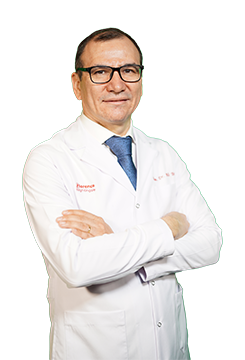
What is the High-Risk Baby Monitoring Unit?
The Risky Baby Monitoring Unit is a special unit established for the purpose of closely monitoring and treating the health status of babies born prematurely or those who experience complications during or after birth. This unit is equipped for stabilizing the vital functions of babies, monitoring their growth and development in a healthy manner, and early diagnosis and treatment of diseases if any. It also plays a critical role for babies with various health problems such as premature babies, low birth weight babies, babies with respiratory problems or babies with congenital anomalies.
About the Risky Baby Monitoring Unit
The High-Risk Baby Monitoring Unit is a health unit equipped with the most advanced technologies offered by modern medicine and staffed by specially trained health professionals. A range of advanced medical devices and methods are used in this unit to protect and improve the health of babies. The monitoring unit operates as an extension of the neonatal intensive care unit (NICU) and ensures that babies in the risk group are kept under constant surveillance. In addition, monitoring can continue after the baby is discharged, so that the long-term health status of the babies is kept under control.
Who is the Risky Baby Monitoring Unit Specialist and What Are Their Duties?
The specialist in the Risky Baby Monitoring Unit is a pediatric specialist who evaluates the health status of newborn babies, creates and implements treatment plans. These specialists have received special training for the needs of babies born prematurely, with low birth weight, with congenital anomalies or who experience complications during birth. The specialists' duties include monitoring the vital signs of babies, assessing their development, planning necessary treatments and interventions and counseling families. They also work with a multidisciplinary approach and collaborate with other health professionals.
What is the Importance of Early Intervention in High-Risk Babies?
Early intervention is vital for babies at risk. Even the slightest negative change in the health status of babies requires rapid and effective intervention. With early intervention, permanent damage that may occur in babies can be prevented, a healthy development process can be supported and their quality of life can be increased. Early intervention, especially for premature babies, plays a critical role in terms of lung development, brain functions and general health status. For this reason, continuous monitoring and intervention processes are carried out with great care in the Risky Baby Monitoring Unit.
What are the Procedures Performed in the Risky Baby Monitoring Unit?
Procedures performed in the Risky Baby Monitoring Unit are carried out with an individualized approach according to the baby's health status.
The main operations performed in this unit are as follows:- Respiratory Support: Babies may not have fully developed lungs, so respiratory support may be required. This support is provided using mechanical ventilators or continuous positive airway pressure (CPAP) devices.
- Nutritional Monitoring: Premature or low birth weight babies require special attention regarding nutrition. In this unit, methods such as nasogastric tube, total parenteral nutrition (TPN) are used to ensure adequate nutrition of the baby and breastfeeding is supported.
- Infection Control: Babies have a high risk of infection because their immune systems are not fully developed. In the High-Risk Baby Monitoring Unit, sterilization and antisepsis procedures are meticulously applied to prevent and treat infections, and antibiotic treatment is initiated when necessary.
- Neurological Assessment: Brain development and functions are closely monitored. Imaging and testing methods such as ultrasonography and electroencephalography (EEG) may be used within the scope of neurological assessment. The baby's neurological development is carefully monitored and possible problems are intervened early.
- Developmental Monitoring: Physical, mental and motor development of babies are regularly evaluated. When necessary, supportive treatments such as physiotherapy and occupational therapy are applied.
- Laboratory Tests and Imaging: Laboratory analyses such as blood tests, metabolic screenings, liver and kidney function tests are performed. In addition, radiological imaging methods are used to evaluate the general health status of babies.
- Cardiovascular Monitoring: The baby's heart functions are constantly monitored. Vital parameters such as heart rate, blood pressure and oxygen saturation are monitored and kept under control.
- Drug Therapy: When necessary, babies are given special drug treatments. These treatments can be in different areas such as respiratory support, infection prevention, and treatment of neurological problems.
These procedures, which are carried out in the Risky Baby Monitoring Unit, are carried out meticulously to ensure that the baby grows and develops healthily and to prevent possible complications. During this process, families are also provided with consultancy services and are informed about the health status of their babies.
Who Can Benefit from the High-Risk Baby Monitoring Unit?
Babies who can benefit from the High-Risk Infant Monitoring Unit include those born prematurely, those with low birth weight, those who experience oxygen deficiency during birth, those with genetic or congenital anomalies, those at risk of infection, or those with serious respiratory problems. In addition, babies who require monitoring and treatment due to any medical condition can also benefit from the services provided by this unit. Close monitoring of the health status of high-risk babies and rapid intervention when necessary minimizes the risks they may face in the early stages of their lives.

